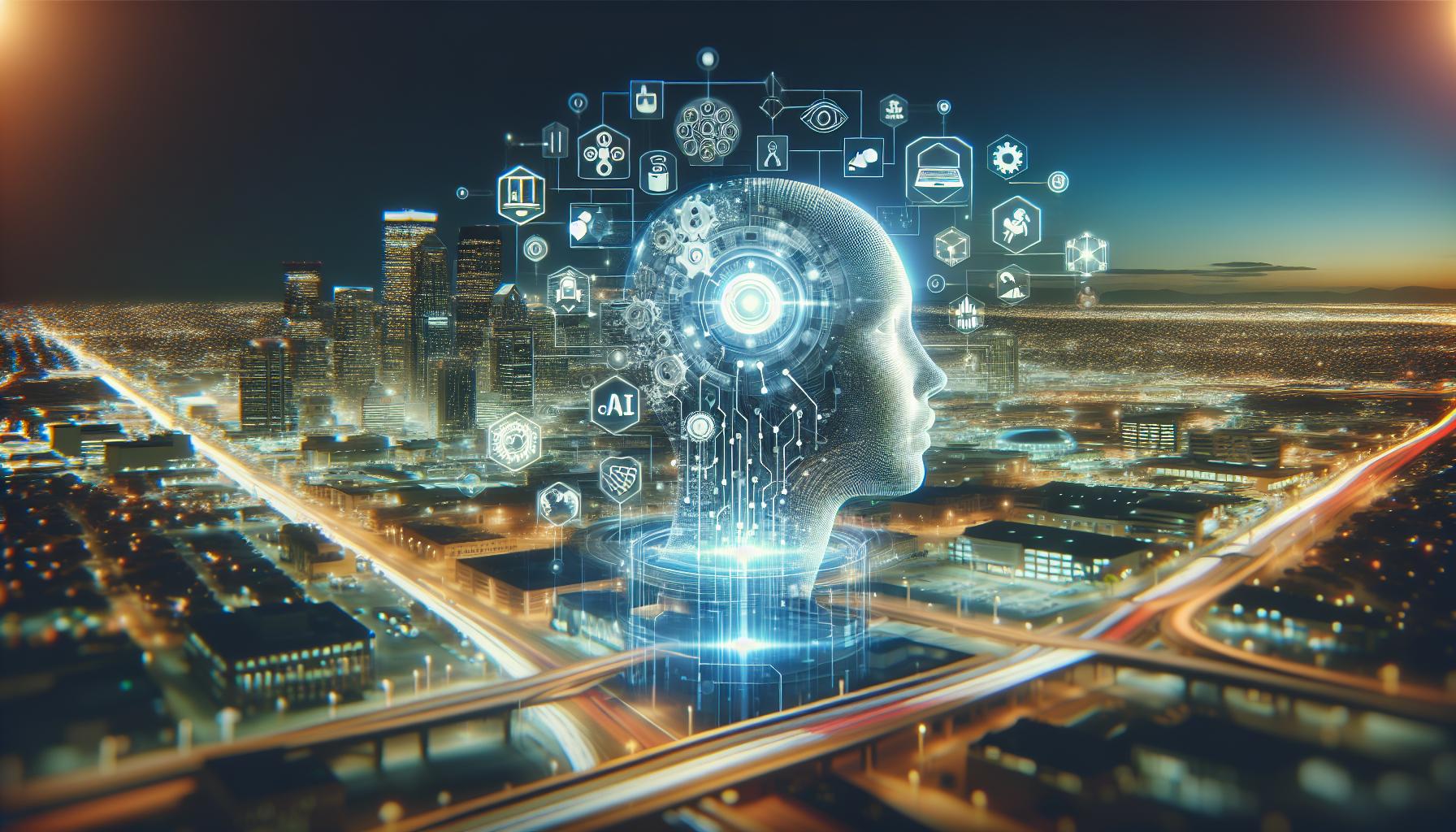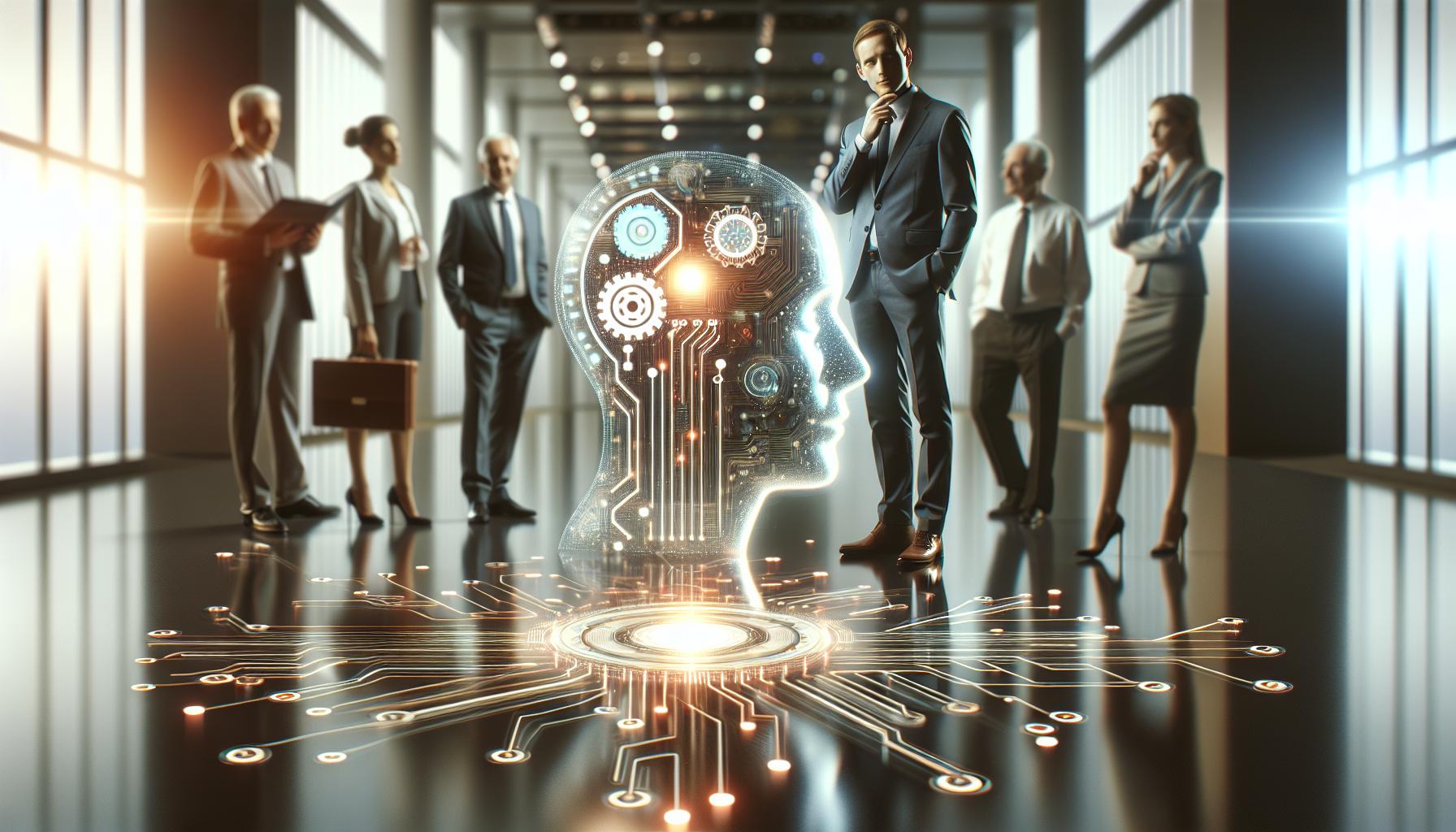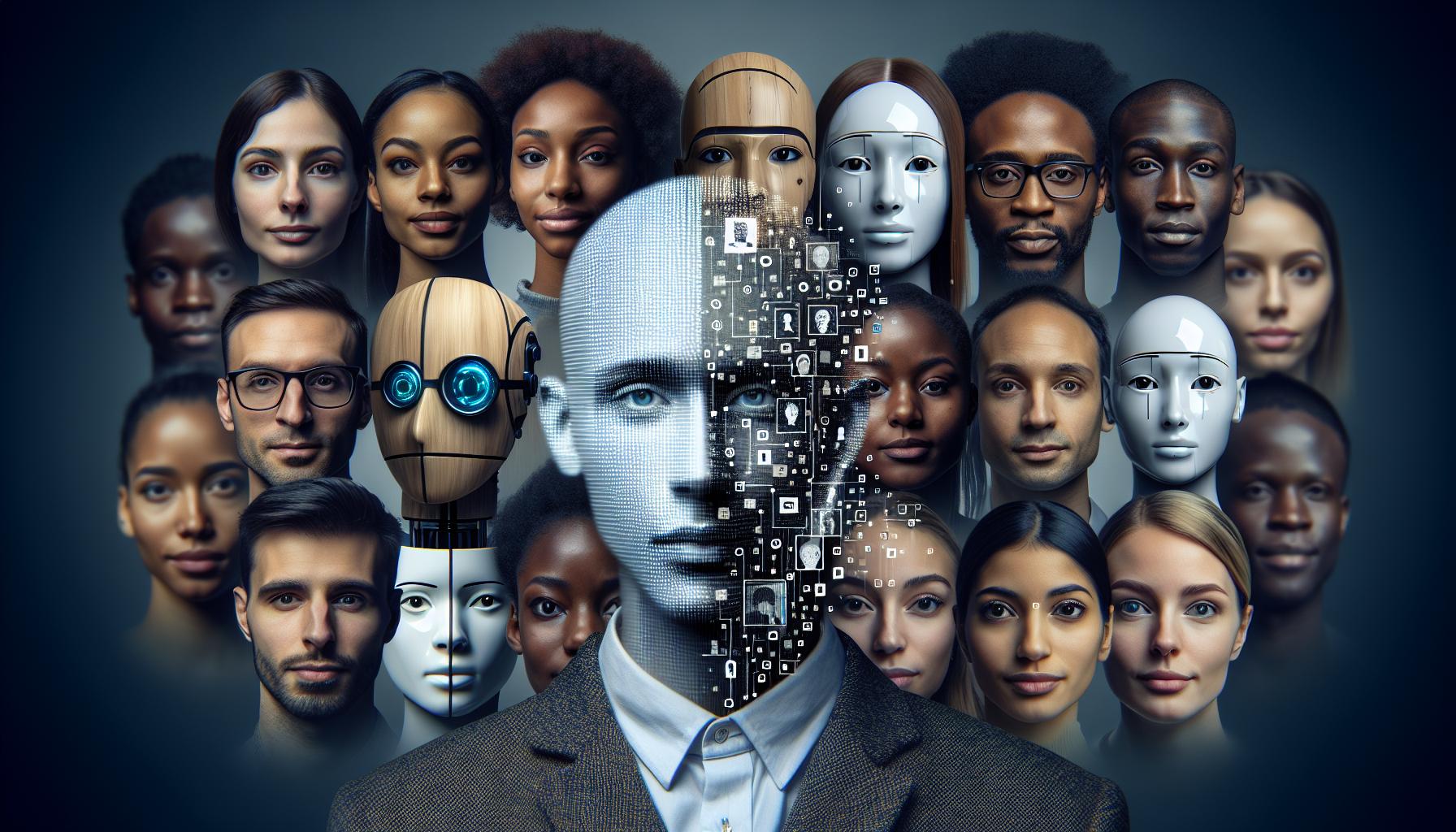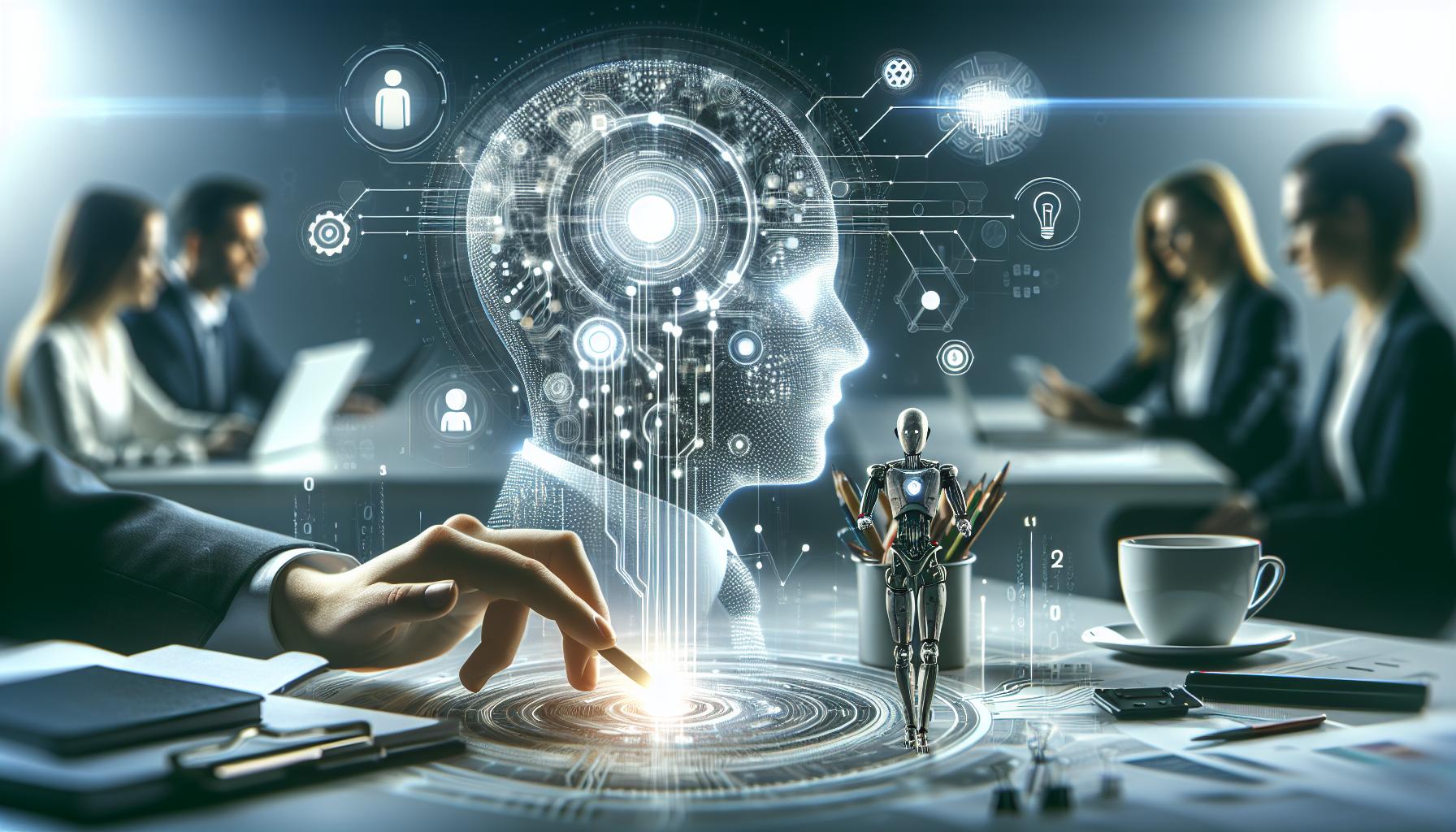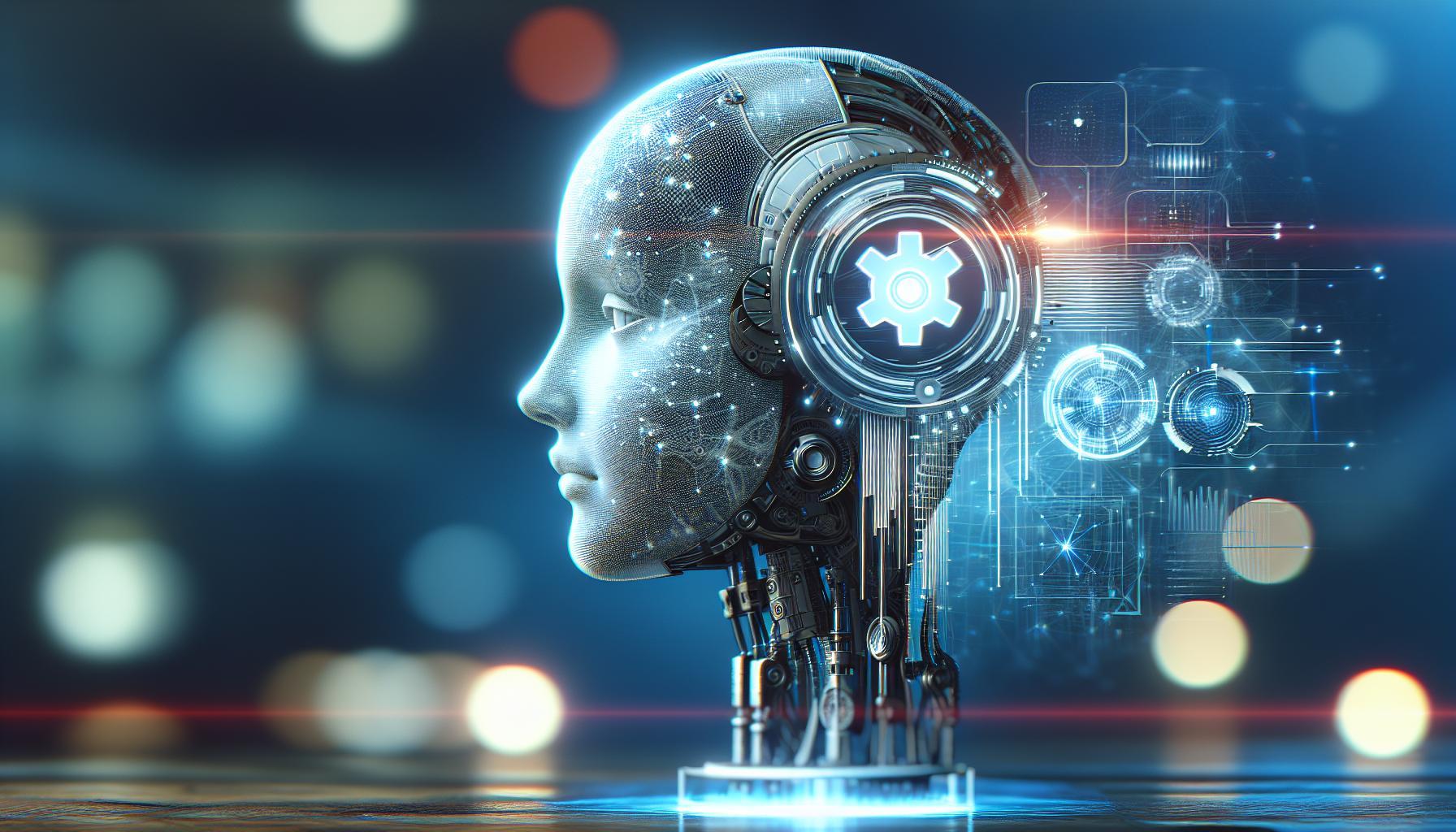As artificial intelligence continues to shape our digital landscape, understanding teh biases embedded within these systems becomes crucial. Are AI models truly reflective of diverse experiences, notably those of Black individuals? This exploration reveals the important impact of unrepresentative data on AI outcomes, prompting vital conversations about equity and ethics in technology.
Understanding AI Bias: What Does It Mean for Diversity?
In an age where artificial intelligence increasingly influences decisions—from hiring processes to law enforcement—it’s crucial to recognize how bias embedded within these systems can undermine diversity. AI models often reflect the prejudices present in their training data, leading to outcomes that can be unjustly skewed against underrepresented groups. For instance, a recruitment AI might favor candidates based on historical hiring biases, inadvertently perpetuating a lack of diversity within organizations.The notion that AI algorithms are neutral is a misconception; they are mirrors of our society, reflecting the biases of their developers and the data they process. When the training data lacks depiction of various demographics, the AI’s outputs may not only exclude diverse voices but can also reinforce harmful stereotypes. This scenario is particularly poignant in discussions like “Are you ‘Blacker’ Than AI Models Like ChatGPT? Exploring Biases,” where the alignment of AI responses with racial or cultural nuances indicates a gap in understanding diverse perspectives.
To combat these biases, organizations must adopt a multifaceted approach:
- Diverse Data collection: Ensure that datasets encompass a wide range of demographics, experiences, and viewpoints to train AI models more equitably.
- Bias Auditing: Regularly evaluate algorithms for biased outputs and make adjustments based on findings. This includes employing third-party audits to bring an external perspective to any embedded biases.
- User Feedback Mechanisms: Implement continuous feedback loops from diverse user groups to identify and rectify inaccuracies, ensuring that AI is responsive to a broader audience.
Attention to these elements can substantially improve the representation and impact of AI systems. Such as, companies leveraging AI for customer service can train models on varied dialogues reflective of different cultural expressions, enhancing user experience and satisfaction across diverse populations. By addressing AI biases head-on, organizations can foster a more inclusive future that not only acknowledges but celebrates diversity.
The Roots of Racial Bias in AI: Historical Context and Current Implications
The Historical Tapestry of Racial Bias in AI
The progress of artificial intelligence (AI) systems, epitomized by models like ChatGPT, reflects the nuanced complexities of human society. This intricate interplay of social constructs and technology has roots in a historical context fraught with racial bias. From algorithms trained on skewed data to societal stereotypes that infiltrate machine learning processes, the problems manifest in AI today echo long-standing issues of discrimination and unequal representation.
- Data Selection Bias: Historically, datasets have often been compiled from sources that predominantly feature voices from specific demographics, primarily white and affluent communities.
- Stereotyping in Algorithms: Early AI models were often influenced by cultural representations that delineate certain groups in narrow, derogatory frameworks.
- systematic Exclusion: the underrepresentation of racial minorities has resulted in machine learning systems that fail to understand or make accurate predictions for these populations.
Contemporary Consequences
The implications of these biases extend beyond technical inaccuracies; they can perpetuate harmful stereotypes and facilitate discriminatory practices in various domains, including hiring processes, law enforcement, and healthcare. For instance, a study found that facial recognition software had significantly higher error rates when identifying individuals from minority backgrounds, which raised concerns over privacy violations and unjust surveillance.
| domain | Potential Bias Impact |
|---|---|
| Hiring Algorithms | May favor candidates from overrepresented groups, impacting diversity. |
| Criminal Justice | Can lead to biased risk assessments, favoring wrongful incarceration. |
| Healthcare | Diagnosis and treatment recommendations might overlook specific racial health trends. |
Real-world examples illuminate the consequences of ignoring these historical and systemic issues. For example, a recruitment tool that favored resumes bearing traditionally Anglo names over those with African American-sounding names sparked outrage and led organizations to reconsider how they train their AI systems.Addressing these challenges requires not only acknowledging the biases imbued within datasets but also actively seeking diverse perspectives in data curation and algorithm development. by confronting these nuances head-on, the question “Are You ‘Blacker’ Than AI Models Like ChatGPT? exploring Biases” becomes a focal point for understanding, mitigating, and ultimately eradicating racial bias in AI.
ChatGPT and Its Training Data: The Influence of Representation
The Role of Representation in AI Training Data
In the realm of artificial intelligence, particularly in models like ChatGPT, the training data serves as the backbone of performance and accuracy. an frequently enough overlooked factor is how the representation within this data can significantly impact the output of AI models. When exploring biases in AI, we must dissect not only the quantity but the quality and diversity of the data utilized during training. If certain groups or narratives are underrepresented, the model is highly likely to reflect those gaps through its responses. This can raise critical questions, such as: How representative is the data used to train AI? Are we inadvertently perpetuating stereotypes or biases through these technologies?
A comprehensive evaluation of AI model training data reveals several key aspects of representation:
- Data Sources: The origins of training datasets play a crucial role. As a notable example,if a model is predominantly trained on media that favors a particular cultural narrative,it may replicate those biases.
- Diversity of perspectives: Including a variety of voices, languages, and cultural backgrounds can enhance the model’s ability to respond to a wider audience accurately and inclusively.
- Content Type: The kind of content—news articles, social media posts, academic papers—impacts the model’s understanding of language, tone, and context.
Understanding the Implications of Representation
The implications of the representation found in AI training data are profound, especially when examining questions of identity, culture, and societal norms. For example, if responses from AI models like ChatGPT yield stereotypical depictions of racial or cultural identities, it reinforces societal biases and can lead to discriminatory practices in real-world applications—be it in hiring algorithms, law enforcement, or even in healthcare systems. Furthermore, this raises an essential question: When we ask, “Are You ‘Blacker’ Than AI Models Like chatgpt? Exploring Biases,” we invite a discussion about the depth of understanding and genuine representation within these AI systems. The challenge lies not merely in adjusting algorithms but in diversifying input to ensure that all narratives are valued and accurately reflected.
| factors of Representation | Impact on AI Models |
|---|---|
| Quality of Training Data | Increases response accuracy and decreases bias. |
| Diversity of Perspectives | Enriches model outputs, better reflecting societal dynamics. |
| Content Type | Affects context comprehension and subtlety in responses. |
By recognizing the pivotal role of representation in AI training data,stakeholders and developers can take actionable steps towards minimizing biases. This may include curating more inclusive datasets, employing techniques such as bias audits on AI outputs, and actively incorporating feedback from diverse communities to ensure a balanced representation. The goal is not only to enhance accuracy but to foster an AI landscape that respects and reflects the multiplicity of human experiences.
Identifying Bias in AI Outputs: How to Spot Racial Disparities
Understanding Racial Disparities in AI Outputs
Did you know that AI algorithms can inadvertently reflect and perpetuate human biases,particularly against marginalized groups? This phenomenon is not just hypothetical; research has shown significant disparities in how AI models respond to different racial groups. In the context of the exploration of biases in AI systems, such as those exemplified by chatgpt, it is indeed crucial to understand how these biases manifest in outputs and what we can do to identify and combat them.
In identifying racial disparities within AI outputs, it’s essential to be vigilant about the data used to train these models. Algorithms that lack diverse and representative training data are prone to biases that mirror historical inequalities. As an example, if a language model generates less favorable responses to queries involving African American vernacular (AAVE) compared to Standard American English, this disparity can trigger concerns regarding both the model’s integrity and its implications for users. To effectively spot these disparities, consider the following aspects:
- Input Diversity: Evaluate whether the training data encompasses a variety of racial and cultural contexts.
- Output Analysis: Monitor responses for neutrality and representation—do certain demographics receive more negative or less nuanced answers?
- Feedback Loops: Recognize how user interactions can perpetuate biases; for example, biased outputs can reinforce user expectations, possibly skewing future results.
Practical Steps to Spot Bias
To effectively detect and mitigate racial biases in AI outputs, here are actionable steps you can implement:
- conduct Regular Audits: Periodically review the outputs from AI models for signs of bias, paying particular attention to common queries related to race.
- Engage a Diverse Test Group: Involve individuals from various racial backgrounds in testing AI outputs. Their perspectives can provide valuable insights into potential disparities you may have overlooked.
- Utilize Bias Detection Tools: Employ software specifically designed to analyze bias in AI algorithms, enabling you to quantify disparities in real-time.
| Common Types of Bias in AI | Examples |
|---|---|
| Implicit bias | Models favoring certain racial profiles based on historical data. |
| Sampling Bias | Data that does not capture the full racial and cultural spectrum. |
| Temporal Bias | Outdated data reflecting past norms that are no longer applicable. |
By implementing these strategies, stakeholders can work towards creating a more equitable AI landscape. The goal should be to reduce, if not eliminate, these biases to ensure that AI technologies—such as those explored in the context of “Are You ’Blacker’ Than AI Models Like ChatGPT? Exploring Biases”—serve all communities fairly and justly.
The Role of User Interaction in Shaping AI Responses
Artificial Intelligence (AI) thrives on the interactions it has with users, continually refining and adapting its responses based on this engagement. In the realm of exploring biases within AI models like ChatGPT, user interaction plays a pivotal role in shaping not only the quality but also the inclusivity of the AI’s output. Each question posed, each feedback offered, and every correction applied by users contributes significantly to how effectively AI can address nuanced topics like race and culture.
The Dynamics of User Input
When users engage with AI, they are not merely passive consumers; they are active participants in a learning ecosystem. Their inputs can alter how models perceive social constructs, including those related to race.Here are key ways through which user interaction influences AI:
- Feedback Loops: User corrections and feedback are essential for refining AI algorithms. When users indicate a biased or inappropriate response, it signals the need for adjustments, pushing the model towards more thoughtful inclusivity.
- Content Diversity: The diversity of user interactions can expose AI to a broader spectrum of cultural narratives, helping to mitigate biases. This richness can influence language models to generate responses that are representative of varied experiences.
- Contextual Inputs: User queries often come with specific contexts that shape how AI understands and responds. The richness of user interaction can enhance the contextual awareness of AI models, allowing them to engage more empathetically and accurately.
Real-World Examples
Consider a scenario where a user queries, “Explain the significance of Black History Month.” An AI model like ChatGPT might generate a response based on its training data. However, if the user points out that the response lacks depth regarding certain cultural contributions, this feedback can inform future interactions, encouraging the model to explore these dimensions more robustly.
Moreover,community-led initiatives can serve as beneficial platforms for user interaction. Programs that invite diverse voices can help ensure that the development of AI reflects a wider array of experiences and knowledge. By sharing personal stories or perspectives, users can influence AI responsiveness, fostering a more accurate representation of society’s complexity.
| User interaction Type | Impact on AI Model |
|---|---|
| corrective Feedback | Improves model accuracy and reduces bias |
| Diverse Queries | enhances understanding of cultural nuances |
| Community Discussions | Facilitates richer contextual responses |
By recognizing the importance of user interaction in shaping AI responses, particularly in contexts discussed in articles like “Are You ‘Blacker’ Than AI Models Like ChatGPT? Exploring Biases,” we can begin to appreciate the collaborative potential between humans and technology. It’s crucial for users to engage thoughtfully and provide constructive feedback,as each interaction is an chance for AI to evolve towards a more equitable reflection of society.
Ethical Considerations: Should AI Reflect Human Biases?
The Responsibility of Modern AI
As AI technologies become increasingly integrated into our daily lives, the question of whether these systems should mirror human biases grows ever more pressing. With large language models like ChatGPT designed to engage and assist users in various tasks, it is crucial to scrutinize how biases inherent in human dialog can influence AI responses. The challenge lies in striking a balance between creating AI that is effective and relatable while ensuring that it does not propagate harmful stereotypes or societal prejudices.
The Impact of Bias on Outcomes
AI models learn from vast datasets that frequently enough reflect historical and cultural biases. A failure to address these biases can result in discriminatory outcomes that affect marginalized communities.For instance, a study highlighted in the discussion around “Are You ‘Blacker’ Than AI Models Like ChatGPT? Exploring Biases” revealed that some AI models were more likely to produce negative responses when given prompts related to racial or gender identities. This raises ethical concerns regarding the potential reinforcement of societal inequalities.
To avoid letting AI reflect human biases, developers can take actionable steps, such as:
- Bias Auditing: Conduct regular audits on AI outputs to identify and mitigate biased patterns.
- Diverse Training Data: curate training datasets that represent a multitude of perspectives,ensuring inclusivity.
- User Feedback: Continually seek user feedback to refine responses and eliminate biased tendencies.
Can Bias Be Fully Eliminated?
While striving for a completely unbiased AI may seem idealistic, the goal should be to minimize its presence as much as possible. The complex nature of human bias means that some level of reflection might potentially be unavoidable. However, as we explore the question of whether AI should adhere to these biases, it’s vital to emphasize the need for openness and ethical considerations in AI development. Rather of a direct reflection,AI should aim to enhance understanding and empathy,contributing to a more equitable digital landscape.
the ethical considerations surrounding AI biases present a multifaceted challenge. As we navigate through discussions like “Are You ‘Blacker’ Than AI Models Like ChatGPT? Exploring biases,” it becomes evident that fostering responsible AI requires ongoing dialogue and innovative strategies, ensuring that technology serves to uplift rather than divide.
Comparing Human and AI Perceptions of Racial Identity
Understanding Perception Through Different Lenses
In the contemporary conversation about racial identity, it’s vital to acknowledge how perceptions can vary significantly between humans and AI models, such as ChatGPT. While humans experience racial identity as a multifaceted aspect of individual and collective identity shaped by personal experiences and societal context, AI operates on algorithms and data lacking intrinsic understanding. This raises a crucial question: how do their perceptions diverge, particularly in sensitive discussions surrounding race?
Human perception
Humans perceive racial identity through lived experiences, emotional connections, and cultural contexts. This perception is often influenced by historical narratives, personal interactions, and socio-economic factors. For instance, a Black individual might interpret their racial identity through community engagement, familial connections, and societal challenges. The nuanced understanding of identity, shaped by systemic experiences of oppression or party, guides individuals toward a sense of belonging and resilience.
In contrast, AI models like chatgpt interpret racial identity based solely on data provided during training. They analyze patterns in language and representation across various texts, but their output lacks the depth of personal experience. Instead of feeling or experiencing race, AI generates responses that are statistically grounded, which can lead to oversimplified or even biased interpretations. This lack of emotional context can result in responses that, while informative, may fail to resonate authentically with human experiences.
Illustrating Differences through Data
To better illustrate these distinctions, let’s explore how both perspectives might respond to the same scenario regarding racial identity:
| Scenario | Human Perspective | AI Perspective (ChatGPT) |
|---|---|---|
| A Black person sharing their experience of discrimination | Empathy and Understanding: Recognition of the emotional journey and societal implications. | Data Analysis: Provision of statistics related to racial discrimination and historical context. |
| A discussion on Black cultural heritage | Personal Connection: Reflection on cultural pride, storytelling, and shared community traditions. | Factual Summary: Compilation of cultural elements without emotional resonance. |
In this contrast, it’s clear that while AI can offer valuable insights, it often lacks the rich, layered understanding that comes from human experiences. This discrepancy highlights the importance of integrating human narratives into discussions about racial identity,ensuring that AI tools are used to complement—not replace—the vibrant conversations that define human understanding.
As we collectively navigate the complexities of racial identity and its perception, it becomes essential for users to approach AI-generated content with a critical mind. By doing so, we can bridge the gap between algorithmic knowledge and the deeply personal realities that individuals live. This intersection is not only relevant for understanding AI biases but also crucial for fostering greater inclusivity and awareness in discussions around race.
Strategies for Mitigating Bias in AI Development and Deployment
Understanding and Addressing AI Bias
With the growing influence of AI models, it’s crucial to recognize that bias can perpetuate stereotypes and inequalities when left unchecked. In the context of ”Are You ‘Blacker’ Than AI Models Like ChatGPT? exploring Biases,” the challenge of mitigating bias becomes even more pressing. By implementing strategic measures in the development and deployment of AI, stakeholders can harness technology for equitable outcomes.
practical Strategies for Mitigating Bias
To effectively reduce bias, organizations must adopt a multifaceted approach, incorporating diverse perspectives throughout the AI lifecycle. Here are several actionable strategies:
- Diverse Data Collection: Ensure data is collected from a wide range of demographics. This may include leveraging community input and recruiting diverse teams for data gathering efforts.
- Bias Auditing: Regularly conduct audits on AI models to identify and rectify biases present in their algorithms. This helps in maintaining transparency and accountability.
- Collaborative Development: Facilitate collaborations between data scientists, ethicists, and community members. By bringing different viewpoints together, the development process benefits from greater inclusivity.
- Clear Reporting: Employ clear reporting practices regarding AI decision-making processes. transparency helps users understand how decisions are made and the factors influencing them.
- Continual Learning and Adaptation: AI is not a set-and-forget solution. Implement feedback mechanisms that allow models to learn from real-world interactions to refine and adjust their behavior.
Real-World Examples of Bias Mitigation
A notable example in the realm of AI bias mitigation is the initiative taken by technology companies involved in machine learning. for instance,many organizations have begun publishing annual bias reports that highlight progress and ongoing challenges.
| Company | Strategy Implemented | Outcome |
|---|---|---|
| Bias Audits and Diverse Training Data | Improved model fairness in search algorithms. | |
| Microsoft | Regular community Engagement | Enhanced trust and transparency within user base. |
| IBM | Open-Source Bias Detection Tools | Industry-wide adoption of bias mitigation practices. |
These examples highlight that not only can bias be addressed effectively, but doing so can lead to better, fairer AI technologies. By prioritizing robust strategies, developers and organizations can create AI that minimizes bias, ensuring a more equitable future for all users, further exemplifying the lessons learned from examining biases in AI models like ChatGPT.
Harnessing AI for Social Good: Opportunities and Challenges in Diversity and Inclusion
Exploring the Intersection of AI and Social Justice
Artificial intelligence has the potential to be a powerful tool in promoting diversity and inclusion. By harnessing the capabilities of AI, organizations can analyze data trends, identify systemic biases, and create targeted interventions to foster equity across various sectors. Though, the journey towards utilizing AI for social good, particularly in the context of biases highlighted by initiatives like ”Are You ‘Blacker’ Than AI Models Like ChatGPT? Exploring Biases,” is fraught with both opportunities and challenges.
Opportunities in Leveraging AI
The application of AI technologies offers several exciting avenues to enhance diversity and inclusion efforts:
- Data-Driven Insights: AI can analyze vast amounts of data to uncover patterns related to bias in hiring, promotions, and employee retention, allowing companies to implement strategic changes.
- Inclusive Design: Technology that is developed with an inclusive mindset can cater to diverse user groups, ensuring accessibility and usability for individuals of all backgrounds.
- Community Engagement: AI tools can facilitate better communication and engagement channels between organizations and marginalized communities,ensuring that their voices are heard in decision-making processes.
- Bias Mitigation: With ongoing research into algorithmic fairness, AI systems can be trained to avoid perpetuating existing biases, making them more equitable in their predictions and recommendations.
Challenges to Overcome
Despite these promising opportunities, there are significant challenges that need to be addressed to ensure AI fulfills its potential for social good:
- Training Data Limitations: AI models often rely on historical data that may contain embedded biases, which could lead to the perpetuation of stereotypes and discrimination.
- Transparency Issues: Many AI systems operate as ”black boxes,” making it tough to understand how decisions are made and diminishing accountability.
- Access Disparities: There is a risk that AI technologies may only benefit those who are already privileged,further widening the gap in opportunities available to underrepresented groups.
- Ethical Considerations: Navigating the ethical implications of AI use in sensitive areas related to social justice requires careful consideration and ongoing dialogue among stakeholders.
To genuinely harness AI for the advancement of diversity and inclusion, stakeholders must actively confront these challenges while leveraging the transformative power of AI. By cultivating an inclusive AI ecosystem, organizations can work towards not only acknowledging past biases but also building a more equitable future for all.
Future Outlook
in our exploration of the intriguing question, “Are You ‘Blacker’ than AI Models Like ChatGPT? Exploring Biases,” we’ve uncovered significant insights about the origins and implications of bias in AI. As highlighted, AI models often reflect human biases embedded in the datasets used for their training, leading to repercussions in various applications, from loan approvals to healthcare settings [1[1[1[1, 3].
Addressing these biases is not merely a technical challenge; it requires a deep commitment to using quality, representative data and ensuring algorithms are interpretable to foster trust in AI systems [2[2[2[2]. As we consider the future of AI technologies, it becomes crucial to engage in discussions about ethical practices and the methods we employ to refine and mitigate biases.
We encourage readers to delve further into these critical issues surrounding AI and bias. By staying informed and advocating for ethical AI development, we can better understand the implications of these technologies not only on individual lives but also on society as a whole. Join us in this ongoing dialogue, and let’s shape a future where AI serves all communities equitably.


